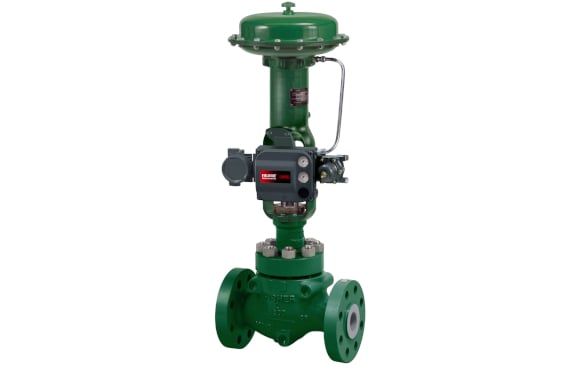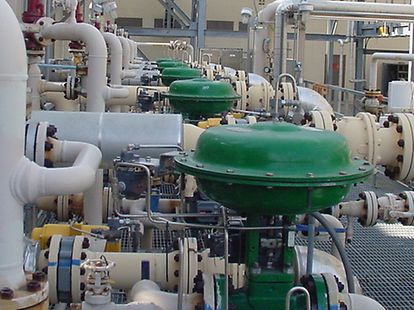Crucial Factors to Take Into Consideration When Choosing Control Valves
Crucial Factors to Take Into Consideration When Choosing Control Valves
Blog Article

Maximize Power Savings and Convenience With Advanced Structure Automation Controls
In the realm of modern-day architecture and center administration, the integration of advanced structure automation manages stands as a pivotal development. The convergence of modern technology and sustainability has birthed a new era where power effectiveness, comfort optimization, and functional streamlining are no more possible truths however far-off ambitions. By using the power of automation, structures can adapt, respond, and advance in manner ins which were once unthinkable. The possibility for significant power savings and improved comfort is not simply an opportunity yet an assurance waiting to be fulfilled. This standard change in structure management holds the vital to opening a world where ecological conscientiousness and occupant health sympathetically coexist within the walls of our frameworks.
Power Efficiency Advantages
Energy efficiency advantages can substantially reduce energy usage and operational expenses in structures. Energy-efficient systems, such as sophisticated structure automation controls, can optimize the use of resources like heating, lights, and cooling, leading to lower energy expenses over time.
In addition, enhanced power efficiency can lengthen the lifespan of building tools and systems. By running a lot more effectively, heating and cooling systems, lighting fixture, and various other building components experience much less damage, causing reduced maintenance and replacement prices. Additionally, energy-efficient buildings often regulate greater residential property worths and rental prices, supplying lasting economic benefits to proprietors.
In addition, energy effectiveness can boost passenger comfort and efficiency. Properly regulated interior atmospheres with ideal lighting and thermal conditions produce an even more helpful and pleasant workspace, causing improved worker complete satisfaction and performance. On the whole, the power effectiveness benefits connected with sophisticated building automation controls are multifaceted, including expense financial savings, ecological stewardship, and resident health.
Enhanced Comfort Control
Enhancing convenience control in structure environments requires a sophisticated integration of sophisticated automation systems for ideal occupant well-being. By utilizing sophisticated building automation controls, facilities can customize the indoor environment to fulfill the certain needs and preferences of passengers. control valves.
By including these advanced controls, structures can not just enhance convenience but also boost energy efficiency by maximizing system operations based on actual tenancy and usage patterns. Eventually, focusing on owner comfort through innovative automation systems leads to an extra enjoyable and healthier indoor environment.
Functional Efficiency Improvements

Moreover, the execution of real-time surveillance and analytics tools enables structure operators to identify power ineffectiveness and operational abnormalities quickly. By continually checking energy usage patterns and system performance metrics, adjustments can be made in real-time to optimize power usage and ensure peak functional performance. control valves. Additionally, integrating need action techniques right into structure automation controls can even more boost functional performance by dynamically changing energy usage based on grid conditions and pricing signals
Indoor Environment Optimization
Reliable interior environment optimization is an essential facet of building automation controls, making certain owners' comfort and wellness while maximizing power savings. By utilizing innovative sensing units and controls, building automation systems can continually keep an eye on and readjust temperature level, moisture levels, air top quality, and air flow to produce an optimum interior environment. Maintaining comfortable and constant problems not only improves passenger fulfillment yet also boosts performance and overall well-being.
Indoor climate optimization additionally plays a crucial role in power effectiveness. By fine-tuning home heating, cooling, and check my blog air flow systems based on real-time information and occupancy patterns, constructing automation controls can significantly lower power intake - control valves. For instance, implementing methods such as demand-controlled air flow and thermal zoning can aid decrease power waste while making certain that each location of the structure gets the required conditioning.

Sustainable Environment Creation
Building web link automation regulates not only enhance interior climate conditions for energy performance and occupant comfort yet additionally lay the structure for creating a sustainable setting through calculated administration of sources and systems. By incorporating sophisticated building automation technologies, such as sensing units, actuators, and smart software program, facilities can monitor and readjust energy usage in real-time to decrease waste and decrease their carbon footprint. These systems make it possible for anticipating upkeep, recognizing prospective concerns before they escalate and maximizing tools performance to improve durability and performance.
Additionally, sustainable environment development extends beyond energy monitoring to encompass water conservation, waste decrease, and indoor air high quality improvement. Structure automation controls can control water usage, find leaks, and guarantee appropriate waste disposal practices, adding to overall sustainability initiatives. Furthermore, by keeping an eye on and regulating ventilation and filtering systems, these innovations boost owner health and wellness and efficiency while reducing power consumption related to a/c operations.
Conclusion
To conclude, advanced building automation regulates offer significant advantages in regards to power financial go savings, convenience control, functional performance, indoor environment optimization, and developing a sustainable environment. By applying these controls, structures can attain optimal performance while minimizing energy usage and improving resident convenience. It is obvious that making use of advanced automation technology is critical in boosting structure efficiency and producing a much more lasting future.
Power performance advantages can considerably lower power usage and functional prices in structures. On the whole, the power effectiveness advantages linked with advanced building automation controls are complex, including price savings, ecological stewardship, and occupant wellness.
In addition, incorporating need response methods right into structure automation controls can even more enhance operational performance by dynamically readjusting power use based on grid conditions and pricing signals.
Building automation manages not only enhance indoor environment problems for power performance and passenger comfort yet additionally lay the structure for producing a sustainable setting with calculated monitoring of sources and systems.In final thought, progressed building automation controls offer substantial advantages in terms of energy savings, convenience control, functional performance, interior climate optimization, and developing a lasting atmosphere.
Report this page